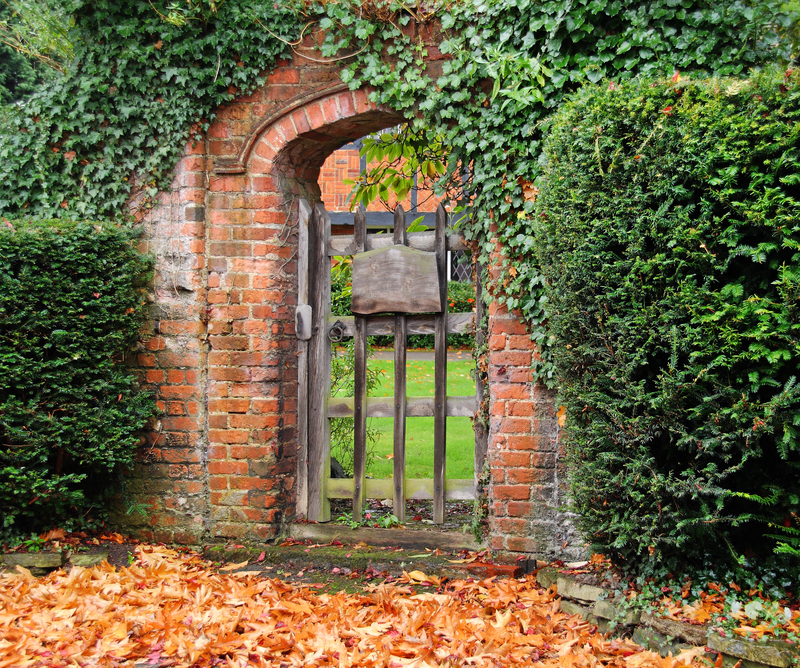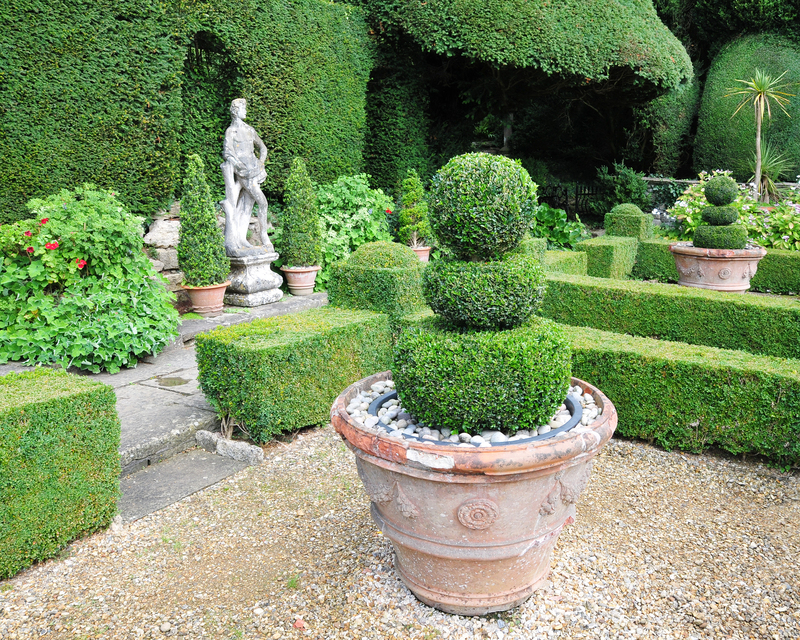Embrace Winter Gardening While Protecting Your Plants
Posted on 30/06/2025
Embrace Winter Gardening While Protecting Your Plants
As temperatures drop and frosts arrive, many gardeners assume their work ends until spring. However, winter gardening not only sustains your love for growing plants year-round but also helps ensure your garden emerges healthier next season. Whether you enjoy the thrill of nurturing cold-hardy vegetables or wish to protect your perennials, embracing winter gardening while protecting your plants is an enriching, rewarding experience.
Why Embrace Winter Gardening?
Gardening in winter brings a host of benefits. Contrary to popular belief, your garden is alive with hidden activity even during colder months. Adopting winter gardening practices helps:
- Preserve soil health by reducing erosion and fostering microbial life.
- Extend your harvest with cold-hardy crops and protected structures.
- Encourage beneficial insects and manage pests naturally.
- Enhance your landscape's beauty with winter interest plants.
- Prepare your garden for a more abundant, thriving spring bloom.

Understanding Winter's Impact on Plants
Chilly weather affects plant life in unique ways. Frost, ice, wind, and reduced daylight can cause:
- Desiccation (drying out) of leaves, particularly for evergreens.
- Root damage from soil freezing and thawing cycles.
- Cracking or splitting bark in some trees and shrubs.
- Weakened or stunted growth once spring returns.
By learning how winter stress impacts your plants, you can tailor your gardening techniques to offer the best protection and foster resilience.
Best Winter Gardening Plants: What to Grow?
Certain plant varieties thrive in cold conditions or go dormant, awaiting warmer weather. These are ideal for those seeking to embrace winter gardening:
Edible Winter Crops
- Kale: Its flavor even improves after frost.
- Spinach
- Swiss chard
- Carrots
- Parsnips
- Brussels sprouts
- Leeks
- Garlic (for harvesting next summer)
Ornamental Winter Interest Plants
- Evergreens: Holly, boxwood, and juniper provide year-round color and structure.
- Winter-blooming shrubs: Witch hazel, wintersweet, and rosemary can bloom in snow!
- Red or yellow twig dogwoods
- Heathers (Erica and Calluna species)
- Hellebores
- Snowdrops and crocus (for late-winter cheer)
How to Protect Your Plants in Winter
The heart of winter gardening lies in knowing how to protect your plants during winter's harshest spells. Here's how to keep your garden vibrant and healthy through the frost:
1. Mulching: The First Line of Defense
- Apply a thick layer of organic mulch (2-4 inches) around the base of perennials, veggies, and young trees.
- Mulch acts as an insulation layer, regulating soil temperature and moisture.
- Use straw, shredded leaves, bark chips, or compost for best results.
2. Use Protective Covers and Cold Frames
- Row covers: Lightweight fabric draped over crops protects from freezing temperatures and harsh winds.
- Cold frames: Simple, small greenhouses placed over planting beds extend growing seasons and shield plants from frost.
- Cloches: Glass or plastic bell-shaped covers protect individual plants.
3. Watering Wisely in Winter
- Water your plants deeply before the ground freezes to maintain root hydration.
- Reduce watering frequency but monitor soil dryness, especially in winter sun and wind.
- Avoid watering during hard freezes or over frozen ground.
4. Managing Snow and Ice
- Gently brush off heavy snow from shrubs and evergreens to prevent limb breakage.
- Do not use deicing salts near garden beds; they can damage roots and alter soil chemistry.
- Ice encasing tree branches can be left to melt naturally to avoid breakage.
5. Pruning and Staking
- Prune dead or diseased branches from trees and shrubs before winter. Avoid heavy pruning when extreme cold is imminent as this can encourage new growth that is easily damaged.
- Stake newly planted trees and tall perennials to prevent wind damage or bending under snow loads.
6. Container Gardening in Winter
- Move containers to sheltered spots, like against south-facing walls or indoors if possible.
- Elevate pots off cold ground and insulate with bubble wrap or burlap to protect roots.
- Choose frost-resistant pots for better durability.
Understanding Microclimates and Site Selection
Every garden is unique - even in winter. Microclimates (small areas where growing conditions differ from the surrounding region) can offer warmer spots for sensitive plants. South- or east-facing slopes, areas near buildings or fences, and spaces protected from prevailing winds are especially valuable for winter gardening.
- Plant tender or less hardy specimens in these areas for extra protection.
- Observe where snow melts first or where frost lingers the longest to understand your microclimates.
Winter Gardening Tasks: What to Do Month by Month
Make embracing winter gardening a routine with these monthly tasks:
- November: Mulch perennials, plant garlic, and tidy beds. Clean and store tools for the season.
- December: Wrap sensitive shrubs with burlap, check protective covers after storms, and bring in tender containers.
- January: Monitor for freeze damage and prune dormant trees and shrubs (except for spring-flowering varieties).
- February: Start sowing seeds indoors, check mulch, and look for early bloomers like snowdrops.
- March: Gradually remove winter protection, refresh beds, prepare for spring planting, and fertilize as needed.
Embracing Wildlife and Supporting Biodiversity in Winter
Winter gardens aren't just for plants--they provide vital shelter and food for local wildlife, too.
- Leave seedheads on ornamental grasses and flowers as a food source for birds.
- Allow some fallen leaves to gather in out-of-the-way spots, offering winter refuge for pollinators and beneficial insects.
- Install a slow-thawing birdbath or water source, and provide nesting boxes or brush piles.
By embracing a wildlife-friendly approach, you help ensure your garden's ecosystem remains balanced, healthy, and harmonious--even during the depths of winter.
Winter Gardening Myths Debunked
Let's tackle a few common misconceptions about winter gardening while protecting your plants:
- Myth: "Nothing grows in winter." - Many cool-season crops and ornamental plants not only survive but thrive in cold weather!
- Myth: "Mulching isn't necessary after fall." - Mulching in late fall or early winter is crucial for protecting roots.
- Myth: "Don't water plants in winter." - While plants need less water, dry winds and sun can still desiccate them. Occasional watering is important.
- Myth: "All garden pests die in winter." - Pests may overwinter in debris--keeping your beds tidy helps reduce outbreaks in spring.
Embracing Winter Gardening: Creative Ideas for Cold Months
Ready to make the most of the season? Here are creative winter gardening ideas you can try:
- Plant a winter window box with evergreens, pansies, and hardy herbs for a pop of color.
- Design a pathway lined with colorful twigs or berries (thoughtfully placed dogwoods, winterberry, holly, etc.).
- Create a mini greenhouse with old windows to protect delicate plans and start seeds early.
- Try indoor gardening with microgreens, herbs, and succulents in sunny spots.
- Host a winter pruning workshop or garden tour in your neighborhood to inspire others!
The Benefits of Embracing Winter Gardening While Protecting Your Plants
Gardeners who nurture their plots through winter enjoy several advantages:
- Soil enrichment: Overwintered cover crops, like rye or vetch, prevent erosion and improve soil nutrients.
- Earlier, stronger spring growth: Winter protection helps perennials and bulbs break dormancy vigorously.
- Extended harvest: With season extenders, leafy greens and root vegetables can be harvested well into winter.
- Wildlife support: A well-tended winter garden provides vital resources for birds, insects, and other species.
- Year-round enjoyment: From snow-dusted evergreens to early-blooming bulbs, winter gardening offers four-season interest and fulfillment.

FAQs About Winter Gardening and Plant Protection
Can I plant anything in winter?
Many cold-hardy vegetables, bulbs, and perennials can be planted in late fall or even during mild winter spells. For warmer zones, some leafy greens can be sown under protection in January-February. Always check your plant's hardiness and your USDA growing zone!
How do I know if my plant needs protection?
Generally, plants at the edge of their hardiness zone, young trees/shrubs, or those in exposed spots need extra care--with mulch, covers, or windbreaks. Established, native plants require less intervention, but evergreens may need some protection from wind and sun on cold days.
How do I prevent plant diseases and pests in winter?
Good garden hygiene is your best tool. Remove old foliage and fallen leaves from beds, clean and disinfect gardening tools, and monitor for signs of rodent or insect activity near structures. Using fresh mulch can reduce the spread of soil-borne pathogens.
What are the signs of winter damage in plants?
Look for browning or scorched leaves (often caused by windburn or frost), wilted stems after a thaw, or splits in tree bark. Root injury may be harder to see, but poor recovery in spring is a clue.
Is fertilizing necessary in winter?
In most cases, avoid fertilizing actively during winter--plants are dormant and can't process nutrients. Instead, focus on soil enrichment with compost or leaf mold, and resume regular fertilizing as growth resumes in early spring.
Conclusion: Thriving Through Winter Gardening
Embracing winter gardening while protecting your plants is the key to a thriving, resilient, and beautiful outdoor space all year round. With awareness and a touch of creativity, your garden can become a place of life, inspiration, and productivity--even in the coldest months.
Whether you're growing hardy vegetables, nurturing ornamental trees, or simply fostering the next season's success, winter gardening is an opportunity to connect with nature in new ways and keep your green thumb active no matter the season.
So bundle up, grab your tools, and experience the magic of winter gardening--your plants will thank you when spring arrives!
Share Your Winter Gardening Success
How do you protect your plants and make the most of your garden during winter? Share your tips and experiences below--let's inspire each other to keep our gardens beautiful and bountiful all year long!

